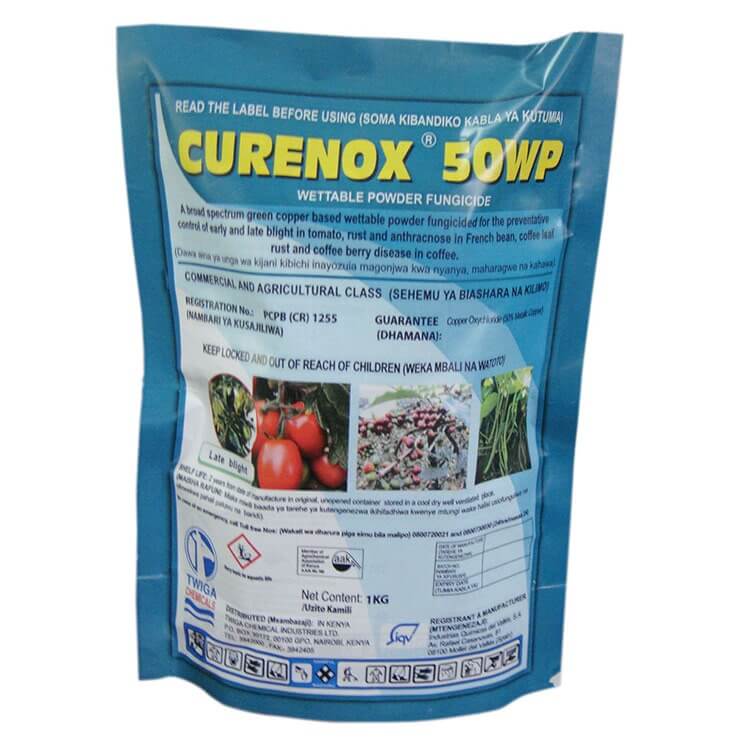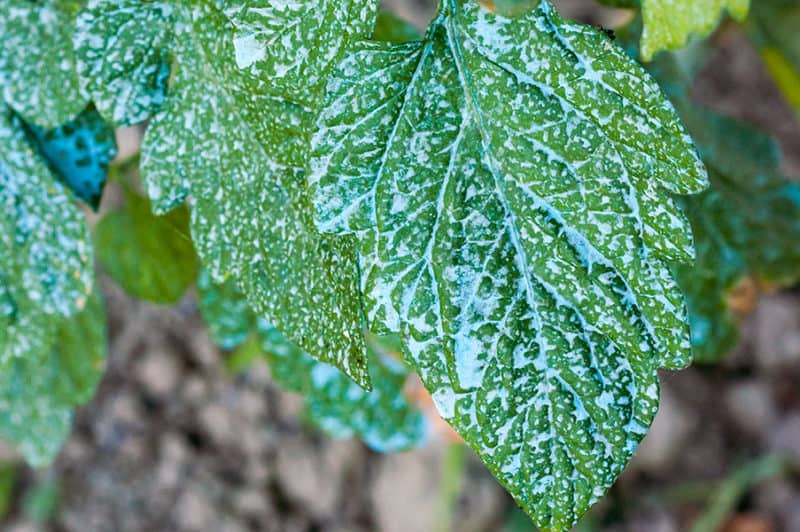Copper Based Fungicides In Kenya
Copper-based fungicides are crucial in Kenyan agriculture for controlling fungal diseases. They contain copper ions that inhibit fungal growth, ensuring healthy crop yields. These fungicides are preferred for their broad-spectrum effectiveness, reliability in disease control, and cost-effectiveness compared to other options.
Copper-based fungicides are widely used in Kenya to combat fungal diseases that affect various crops, including watermelons, tomatoes, and potatoes. These fungicides are valued for their effectiveness, affordability, and relatively low environmental impact compared to other chemical treatments.
Common Types Of Copper Based Fungicides
The most frequently used copper based fungicides in Kenya include Copper Oxychloride, Copper Hydroxide, and Bordeaux mixture. Each of these has specific properties and applications:
- Copper Oxychloride: Effective against a wide range of fungal diseases such as downy mildew, anthracnose, and bacterial blights. It is widely used in crops like coffee, tomatoes, and potatoes.
- Copper Hydroxide: Known for its fine particle size, which provides better coverage and adhesion. It is used on fruits, vegetables, and ornamentals.
- Bordeaux Mixture: A traditional fungicide made from a mixture of copper sulfate and lime. It is particularly effective on grapevines and citrus crops.
Why Use Copper-Based Fungicides?
Copper-based fungicides are preferred in Kenya for several reasons:
- Broad Spectrum: They are effective against a wide range of fungal pathogens, including downy mildew, powdery mildew, and anthracnose.
- Reliability: Farmers trust copper-based fungicides for their consistent performance in controlling fungal diseases, thereby protecting crop yields.
- Cost-Effectiveness: Compared to some alternative fungicides, copper-based options are generally more affordable, making them accessible to a wider range of farmers.
Below is a comprehensive overview of the commonly used copper fungicides, their active ingredients, targeted pests/diseases, and the distributors.

Commercially Available Copper Fungicides in Kenya (List & Examples)
AG Copp 75 WP
- Active Substance: Cuprous oxide (75% metallic copper)
- Target Pests/Diseases: Leaf rust and coffee berry disease in coffee
- Distributor: Twiga Chemical Industries Ltd
Champ Flo SL
- Active Substance: Copper hydroxide (24.4% metallic copper)
- Target Pests/Diseases: Botrytris and black spot in roses; early and late blight on tomato; rust, anthracnose, and angular leaf spot on French beans
- Distributor: Anset International Ltd
Champion 50 WP
- Active Substance: Copper hydroxide (50% metallic copper)
- Target Pests/Diseases: Botrytris and black spot in roses; early and late blight on tomato; rust, anthracnose, and angular leaf spot on French beans; leaf rust and coffee berry disease on coffee
- Distributor: Anset International Ltd
Chem Copp 50% WP
- Active Substance: Cuprous oxide (50% metallic copper)
- Target Pests/Diseases: Coffee berry disease and leaf rust on coffee
- Distributor: Twiga Chemical Industries Ltd
Cobox 50 WP
- Active Substance: Copper oxychloride (50% metallic copper)
- Target Pests/Diseases: Coffee berry disease and leaf rust on coffee; blights and leaf spots on vegetables
- Distributor: Kijani Agencies Ltd
Copper Nordox
- Active Substance: Cuprous oxide (50% metallic copper)
- Target Pests/Diseases: Coffee berry disease and leaf rust on coffee; blights and leaf spots on vegetables
- Distributor: Farmchem (K) Ltd
Copsap 50 WP
- Active Substance: Copper oxychloride (50% metallic copper)
- Target Pests/Diseases: Coffee berry disease and leaf rust on coffee; blights and leaf spots on vegetables
- Distributor: Saroc Ltd
Cupravit 50 WP
- Active Substance: Copper oxychloride (50% metallic copper)
- Target Pests/Diseases: Coffee berry disease and leaf rust on coffee; blights and leaf spots on vegetables
- Distributor: Kijani Agencies Ltd
Cuprocaffaro Micro 37.5 WG
- Active Substance: Copper oxychloride (37.5% metallic copper)
- Target Pests/Diseases: Early and late blight on potato and tomato; rust, anthracnose, bacterial blight, and angular leaf spot on French beans; leaf rust on coffee
- Distributor: Farmchem (K) Ltd
Cuptocaffaro WP
- Active Substance: Copper oxychloride (50% metallic copper)
- Target Pests/Diseases: Early and late blight on potato and tomato; rust, anthracnose, bacterial blight, and angular leaf spot on French beans; leaf rust and coffee berry disease on coffee
- Distributor: Farmchem (K) Ltd
Demildex 50 WP
- Active Substance: Copper oxychloride (50% metallic copper)
- Target Pests/Diseases: Leaf rust and coffee berry disease on coffee
- Distributor: Biomedica Laboratories Ltd
Funguran OH 50 WP
- Active Substance: Copper hydroxide (50% metallic copper)
- Target Pests/Diseases: Leaf rust and coffee berry disease on coffee
- Distributor: Amiran (K) Ltd
Isacop
- Active Substance: Copper oxychloride (50% metallic copper)
- Target Pests/Diseases: Early and late blight on potato and tomato; rust, anthracnose, bacterial blight, and angular leaf spot on French beans; leaf rust and coffee berry disease on coffee
- Distributor: Twiga Chemical Industries Ltd
Kocide DF
- Active Substance: Copper hydroxide (50% metallic copper)
- Target Pests/Diseases: Leaf rust and coffee berry disease on coffee
- Distributor: Twiga Chemical Industries Ltd
Kopacide 50 WP
- Active Substance: Copper oxychloride (50% metallic copper)
- Target Pests/Diseases: Leaf rust and coffee berry disease on coffee
- Distributor: Saroc Ltd and City Farming Ltd
Liquicop SL
- Active Substance: Copper ammonium acetate (80g/l metallic copper)
- Target Pests/Diseases: Anthracnose and bacterial blight on beans
- Distributor: Hygrotech East Africa Ltd
Nordox Super 75 WP
- Active Substance: Cuprous oxide (75% metallic copper)
- Target Pests/Diseases: Leaf rust and coffee berry disease on coffee
- Distributor: Farmchem (K) Ltd
Nordox 75 WG
- Active Substance: Copper oxide (750g/kg metallic copper)
- Target Pests/Diseases: Early and late blight on tomato; rust on French beans; coffee berry disease on coffee
- Distributor: Farmchem (K) Ltd
Orionkopa WP
- Active Substance: Copper oxychloride (50% metallic copper)
- Target Pests/Diseases: Leaf rust and coffee berry disease on coffee
- Distributor: Orion (EA) Ltd
Sulcop 50 DF
- Active Substance: Copper oxychloride (50% metallic copper)
- Target Pests/Diseases: Fungal and bacterial diseases on flowers and vegetables
- Distributor: Osho Chemical Industries Ltd
Usage Recommendations
To effectively use copper fungicides, follow these guidelines:
- Correct Timing: Apply fungicides at the early stages of disease development for maximum effectiveness.
- Proper Dosage: Adhere to the recommended application rates to avoid phytotoxicity and resistance development.
- Integrated Pest Management: Combine copper fungicides with other disease control practices for a holistic approach.
Copper Fungicide Application Guide
| Fungicide | Active Substance | Target Crop | Target Disease | Application Rate |
| Champ Flo SL | Copper hydroxide (24.4% copper) | Tomatoes, French beans | Early/Late blight, rust | 2.5 kg/ha every 7-10 days |
| Chem Copp 50% WP | Cuprous oxide (50% copper) | Coffee | Coffee berry disease, leaf rust | 3 kg/ha at onset of rain |
| Cupravit 50 WP | Copper oxychloride (50% copper) | Vegetables, Coffee | Blights, leaf spots, coffee diseases | 2.5 kg/ha every 10-14 days |
Examples of Copper-Based Fungicides Used in Kenya
| Product Name | Active Ingredient | Target Diseases | Crops |
| Kocide 2000 | Copper hydroxide | Downy mildew, Anthracnose, Bacterial spot | Tomatoes, Potatoes, Beans |
| Cupravit | Copper oxychloride | Powdery mildew, Early blight | Cucurbits (e.g., Watermelon) |
| Funguran OH | Copper hydroxide | Late blight, Leaf spot, Botrytis | Grapes, Vegetables, Fruits |
Copper Based Fungicides Application Techniques & Recommendation
Proper application of copper based fungicides is essential for their effectiveness. The method and timing of application can vary depending on the crop and disease being targeted.
- Spraying: The most common method, ensuring even coverage on leaves and stems. It is important to use the correct nozzle size and spray pressure to avoid phytotoxicity.
- Drenching: Used for soil-borne diseases, where the fungicide is applied directly to the soil around the roots.
- Dusting: Less common, but useful in certain situations where spraying is impractical.
Application Guidelines: It is essential to follow recommended application rates and schedules to maximize effectiveness while minimizing potential risks to human health and the environment. Overuse of copper-based fungicides can lead to copper accumulation in soils, potentially impacting soil microorganisms and aquatic ecosystems if runoff occurs.
Safety Precautions: Farmers are advised to wear protective clothing and equipment during application to minimize exposure risks. Proper disposal of containers and leftover materials is crucial to prevent environmental contamination.
Benefits of Copper Based Fungicides
Copper based fungicides offer several benefits:
- Broad-Spectrum Activity: Effective against a wide range of fungal and bacterial diseases.
- Resistance Management: Helps prevent the development of resistant strains of pathogens.
- Longevity: Provides prolonged protection due to its residual activity on plant surfaces.
Copper Based Fungicides Challenges and Considerations
While copper based fungicides are highly effective, there are several challenges associated with their use:
- Phytotoxicity: Excessive application can cause damage to plants, leading to reduced yields.
- Environmental Impact: Overuse can lead to copper accumulation in the soil, negatively affecting soil health and non-target organisms.
- Cost: These fungicides can be more expensive compared to other options, potentially impacting their affordability for small-scale farmers.
- Residue Management: Residues can accumulate in soils over time, affecting soil health and microbial activity.
- Resistance Development: Prolonged or improper use can contribute to the development of resistant strains of fungal pathogens.
Copper Based Fungicides Best Practices
To maximize the efficacy and minimize the drawbacks of copper based fungicides, the following best practices should be followed:
- Soil Testing: Regular soil testing to monitor copper levels and prevent accumulation.
- Integrated Pest Management (IPM): Combining copper fungicides with other disease control methods to reduce reliance on chemical inputs.
- Correct Dosage: Adhering strictly to recommended application rates and timings to avoid phytotoxicity and environmental harm.
- Protective Equipment: Using appropriate personal protective equipment (PPE) during application to protect human health.
Copper Based Fungicides Case Study: Use in Coffee Farming
Coffee is one of Kenya’s most important cash crops, and copper based fungicides play a crucial role in managing Coffee Berry Disease (CBD) and Leaf Rust.
- CBD Management: Copper Hydroxide is commonly used due to its fine particle size, which ensures good coverage and adherence to coffee plants. Regular applications at the onset of rains have been shown to significantly reduce the incidence of CBD.
- Leaf Rust Control: Copper Oxychloride is often used in combination with other fungicides to manage leaf rust, ensuring prolonged protection and reducing the risk of resistance.
